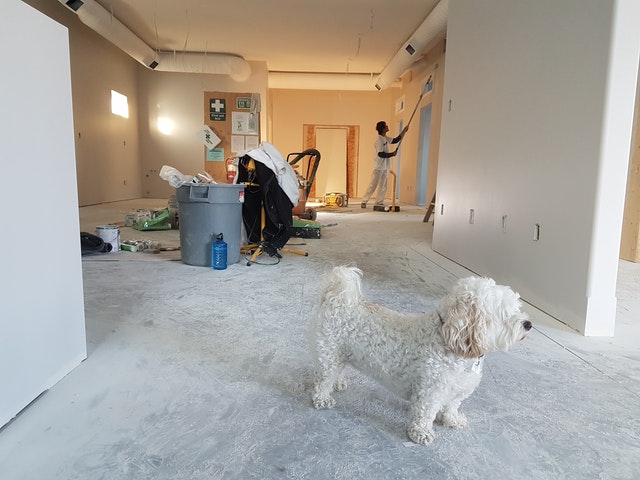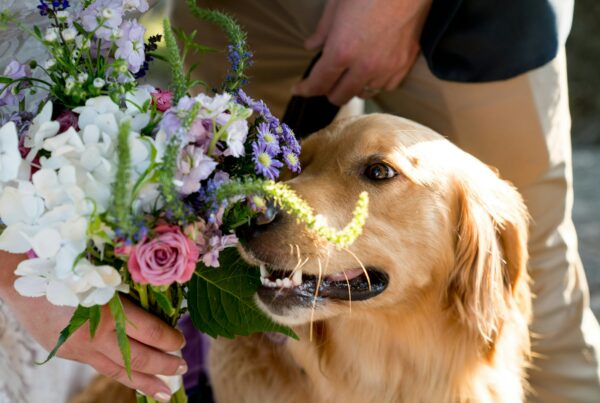Buying a house doesn’t happen so often and is an exciting process in one’s life. It’s a way of building wealth and ensuring your family’s safety. It’s the place you will be able to call your own and where you’ll make the best memories. For pet parents, it’s also an opportunity to accommodate their furry friends and keep them happy and healthy. So, when buying a home, we have to take our pet’s needs into account too. This pet owner’s guide to buying a home will give you advice on what to look for when house-hunting.
Essential Features When Home Shopping As a Pet Owner
Research shows that around 67% of the American population owns at least one kind of pet. The Covid-19 pandemic has only fuelled these numbers, leading to 11.4 million households welcoming a pet to their home since the start of the pandemic.
As pet ownership is becoming more and more common, there’s a growing need for homes with pet-friendly features. For that reason, we consulted the relocation specialists from Pack & Go Movers about the necessary home features their clients looked for when buying and moving houses with pets.
So, without further ado, let’s take a closer look at the pet-friendly features to look for when buying a home.
Yard Size, Fencing, and Location
Having a yard is a great place for your pet to get their much-needed daily exercise. You will want your house to have a big yard if you own a larger and more active dog, like a Husky or Australian Shepherd. If you have a smaller dog breed, a cat, or a guinea pig, having a house with a small backyard will suffice.
Another crucial home feature is fencing, especially if you have a dog. Therefore, a house with a backyard fence should be your priority in your home search. For instance, having split rail fences might be great, so your dog can meet other friendly neighborhood dogs.

Having a fenced yard will help your pet get their daily exercise without necessary supervision.
Finally, the location and environment of your future yard will significantly affect your pet. For example, mosquitoes and other insects will be frequent visitors if the backyard is near a wooded area. This means you will have to put extra effort into treating the yard appropriately for yourself and your pet.
Choose Suitable Flooring – Essential for Our Pet Owner’s Guide to Buying a Home
The flooring is the very base of your home, so you want to make sure you love it and, of course, it’s pet-friendly. So, if you prefer carpets, you will have to purchase appropriate cleaning products for dirt and dander removal. Carpet care when having a pet usually requires a strong vacuum, pre-treatment sprays for potential accidents, and shampooing it entirely once in a while.
However, the majority of pet parents opt for hardwood flooring to prevent damage. The most popular are the scratch-resistant floors since they limit the damage pet claws can cause. Another good option is textured flooring, as it avoids slipping. This floor feature comes in handy when your pets get older.

Flooring is an important feature when buying a home and owning a pet.
If you are moving to a home with no installed floors yet, consider this as a great opportunity to choose the floor type that is both convenient and in line with your aesthetic preferences. Flooring experts usually recommend these types of floors: tile, laminate, vinyl, bamboo, and cork.
Once you choose the flooring that best suits your lifestyle and tastes, you can arrange your relocation process and let professionals help you settle in. Professional residential movers know how to bring in and set up furniture without damaging your floors, but you should still cover them with a plastic sheet until after you move in.
Indoor Play Space
If you own a pet that doesn’t live in a cage, you should have a place where you keep their bed, toys, food, water, and crate. Having a designated area like this will give them a space to rest and allow you to keep your home organized too.
Additionally, you should look into ways to pet-proof your home and allow your furry friend to run and play safely. For example, you can put a cat tree in some suitable vertical space for your cat to enjoy and avoid them tripping over your furniture..

Giving your pets a place to play inside is a must if you want your pet to be happy and healthy.
This also counts for smaller pets that spend most of their time in cages. Apart from supervising their outside play, you should pay special attention to protecting the wires, baseboards, and furniture legs, as they might chew on them.
Flexible Design and Home Layout
If you are looking to purchase a multi-level property, you should consider your pet’s age and breed.
For example, smaller dogs, especially those with longer spines like Corgis, might need help to safely climb the stairs. This also goes for larger dog breeds, such as Labradors, as they are prone to joint injuries and might need your help as they age.
However, if you have enough space on the ground floor, you can use the baby gate to make sure your pet doesn’t have access to them at all. On the other hand, if you want or need them upstairs, there are ways you can help them climb the stairs more safely. E.g., you can purchase a stair runner carpet or install automatic night lights.
Think of Space For Cleaning Your Pets Up When Buying a Home
Your new home should have a place where you can bathe your pet. If you own a large pet, having a bathtub is the best solution. On the other hand, washing them in the sink could do the job if you own a smaller one.
Also, it would be good to have rainy days in mind. Here are some options to limit the amount of dirt once your pets enter your home:
- a patio or mudroom
- paw plungers
- towels
- wipes to help you remove the dirt from their paws and fur.
Proximity to Pet Services
If you are a pet owner buying a home, you should also consider the proximity to a good veterinary clinic. Additionally, pet services like a pet food store, a grooming salon, and a veterinary clinic in reasonable proximity will allow you to tend to your pet’s health without much hurry and hassle.
A Neighborhood with Pet-Friendly Amenities
Finally, a big must on your list should be driving through the neighborhood you are considering buying a house in. You should check out if the area is walkable and pet-friendly. Additionally, pay attention to any parks or green spaces for your furry friend to enjoy their daily walks.

Choosing a pet-friendly neighborhood will make your life and care for your pet easier.
Also, it’s advisable to avoid houses located in busy streets or highways, as cars are dangerous for pets that like to roam.
Introduce Your Pet to Their New Home
When purchasing a house as a pet owner, having these home features in mind will simplify the care for your pet. However, even if you have it all set up, you have to think of your dog’s feelings when moving to a new home. Home relocation is a significant change for everyone, especially your furry friend who might not understand what’s happening.
So, once you’re finished with the home buying process and are ready to move in, keep the following tips in mind to help your pet adjust.
- Walk around the neighborhood – Before moving in, take your pet for a walk around the neighborhood a couple of times, so it becomes a bit familiar to them. Let your dog sniff around and explore new scents and areas.
- Include a lot of play on the day before the move – It would be best to finish most of your moving tasks before you bring your pet to your new home. The reason for this is that this situation poses an escape risk. For example, you might be walking in and out of the house and leave the door open. So, plan a day full of activities before you move in to relieve your pet’s energy and help them stay calm under new circumstances.
- Introduce the house slowly – It’s advisable to limit your pet’s exposure to a single room as you move in. Then, by following your pet’s emotional preparedness, you can take them to the next room. This way, you will help them get used to the new smells and avoid overwhelm.
- However, some pets might be eager to run around and explore. It all comes down to your pet and their personality. Following this advice is helpful, but remember to follow your pet’s lead for what’s comfortable for them.
Final Thoughts on Buying a Home with a Pet
In conclusion, we hope you found our pet owner’s guide to buying a home helpful. Prioritizing these pet-friendly features will make your life easier in many ways. Following our guide will help you keep your home organized by having a special space for your pet with their toys and bed and allow you to take your dog for a walk without having to travel to a park by car. Happy moving!
Photos used:
https://www.pexels.com/photo/kids-playing-with-white-cat-6864965/
https://www.pexels.com/photo/woman-with-a-dog-sitting-on-the-floor-6633198/
https://www.pexels.com/photo/close-up-photography-of-white-poodle-735319/
https://www.pexels.com/photo/woman-plying-with-her-dog-9632118/
https://unsplash.com/photos/AYCA7N_oPtU
Love our content? Share it with a friend or link it to social media. Like short clips of cute household pets? Training tips? Follow us on instagram @nydognanny or on YouTube at nydognanny. Have some news you needs to get to dog and cat parents stat? Email info@newyorkdognanny.com with your article pitch.




